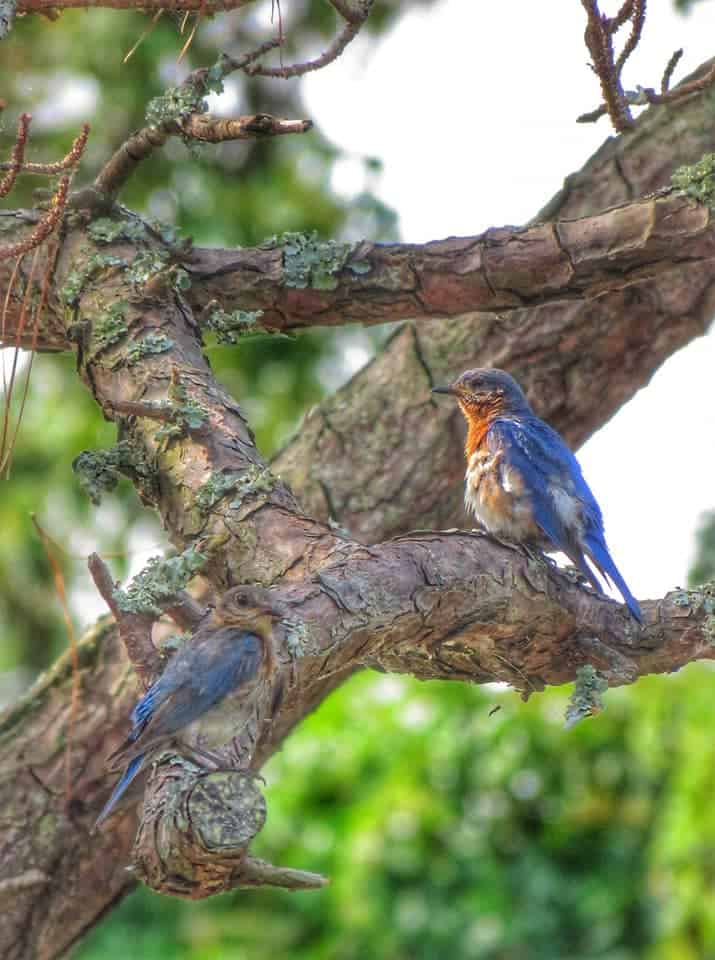Hello Bluebird!
 Have you seen a bluebird lately? Eastern Bluebirds have made a significant come back in numbers over the last two decades, due to conservation efforts of birders and an educated audience. These colorful birds have a voracious appetite for insects, which make them a gardener’s best friend. Bluebirds are members of the thrush family and are a bit larger than sparrows. Males are usually vivid blue with a rusty-red breast and white belly. Females are similar colored but much duller. Young birds have a gray and white speckled breast with a splash of blue in the wings and tail.
Have you seen a bluebird lately? Eastern Bluebirds have made a significant come back in numbers over the last two decades, due to conservation efforts of birders and an educated audience. These colorful birds have a voracious appetite for insects, which make them a gardener’s best friend. Bluebirds are members of the thrush family and are a bit larger than sparrows. Males are usually vivid blue with a rusty-red breast and white belly. Females are similar colored but much duller. Young birds have a gray and white speckled breast with a splash of blue in the wings and tail.
Bluebirds do not migrate from their backyard habitat if there is adequate food and suitable nesting sites. These “cavity dwellers” have unique needs for egg laying and food supply. Bluebirds nest primarily in rural areas, where they can hunt and feed in open areas with sparse vegetation. These beautiful birds are attracted to nesting boxes that are near perch sites with a clear view. Perch sites are very important to the feeding methods of bluebirds. Boxes can be mounted on poles, fence posts or trees. Nesting areas should be carefully monitored for destructive pests like sparrows, wrens and flying squirrels. 
By late March or early April, bluebirds have located a suitable natural cavity or bird house for their nest. After the nest is constructed, one egg is laid daily until a clutch of 3 to 6 pale blue eggs are complete. The incubation period of approximately 14 days begins as soon as the last egg has been laid. Once hatched, young bluebirds are fed by the males and kept warm by the females. Bluebirds reach adult age 18 days after hatching and are encouraged to leave the nest. Exhibiting strong family ties, the young bluebirds will remain in close proximity to their parents throughout the summer and early fall. Bluebird parents might raise as many as three broods annually.
Let’s help boost our eastern bluebird population! Learn more about these smart songbirds and the best practices for mounting nesting boxes by visiting http://www.ncbluebird.org.

Images Credits: Donna Smith Rose (Camden County, NC Photographer)
